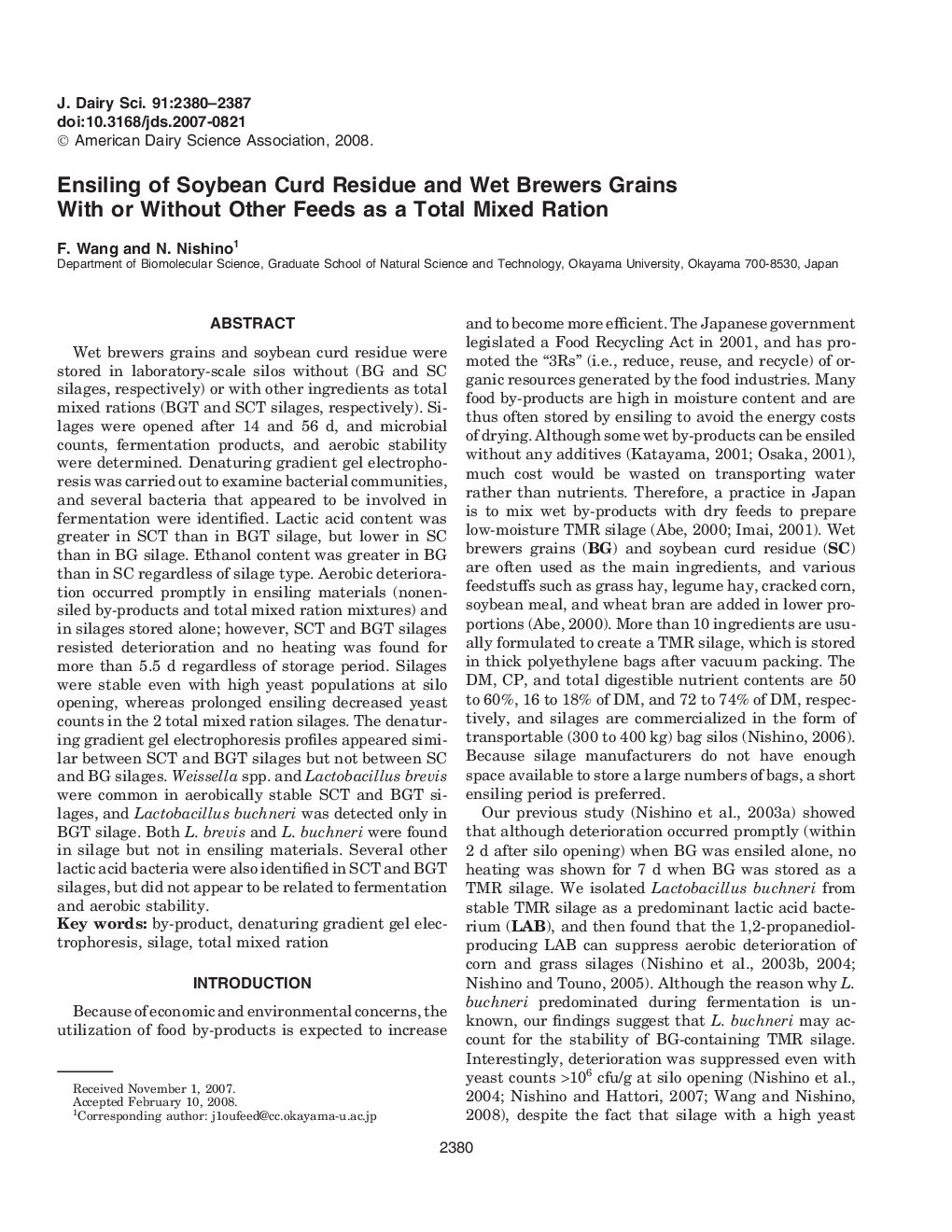| Article ID | Journal | Published Year | Pages | File Type |
|---|---|---|---|---|
| 2439956 | Journal of Dairy Science | 2008 | 8 Pages |
Abstract
Wet brewers grains and soybean curd residue were stored in laboratory-scale silos without (BG and SC silages, respectively) or with other ingredients as total mixed rations (BGT and SCT silages, respectively). Silages were opened after 14 and 56 d, and microbial counts, fermentation products, and aerobic stability were determined. Denaturing gradient gel electrophoresis was carried out to examine bacterial communities, and several bacteria that appeared to be involved in fermentation were identified. Lactic acid content was greater in SCT than in BGT silage, but lower in SC than in BG silage. Ethanol content was greater in BG than in SC regardless of silage type. Aerobic deterioration occurred promptly in ensiling materials (nonensiled by-products and total mixed ration mixtures) and in silages stored alone; however, SCT and BGT silages resisted deterioration and no heating was found for more than 5.5 d regardless of storage period. Silages were stable even with high yeast populations at silo opening, whereas prolonged ensiling decreased yeast counts in the 2 total mixed ration silages. The denaturing gradient gel electrophoresis profiles appeared similar between SCT and BGT silages but not between SC and BG silages. Weissella spp. and Lactobacillus brevis were common in aerobically stable SCT and BGT silages, and Lactobacillus buchneri was detected only in BGT silage. Both L. brevis and L. buchneri were found in silage but not in ensiling materials. Several other lactic acid bacteria were also identified in SCT and BGT silages, but did not appear to be related to fermentation and aerobic stability.
Related Topics
Life Sciences
Agricultural and Biological Sciences
Animal Science and Zoology
Authors
F. Wang, N. Nishino,
